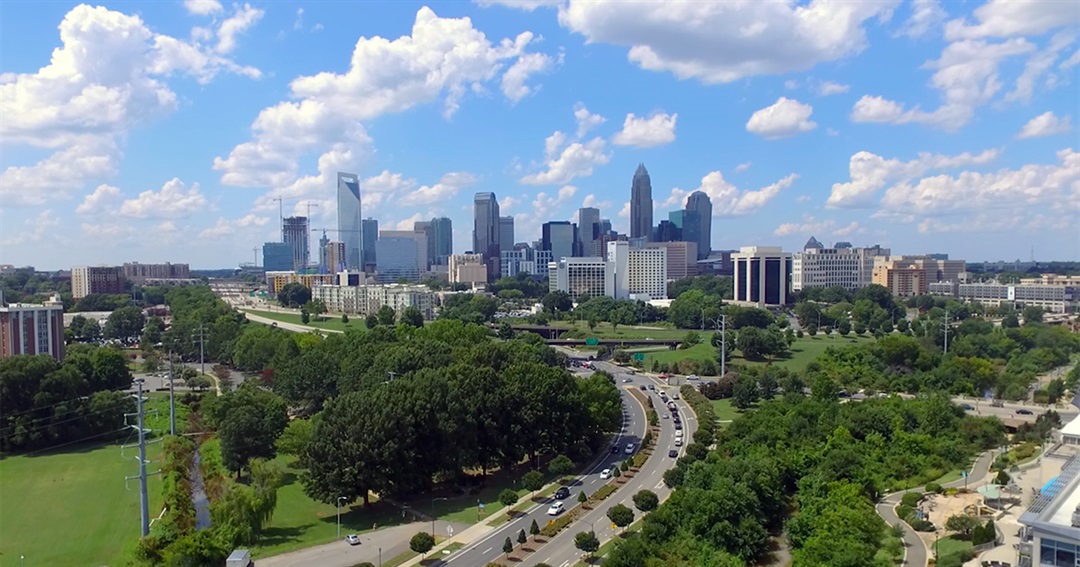3 Easy Facts About Charlotte Nc Aquarium Described
Table of ContentsCharlotte Nc Apartments For Rent - An OverviewThe 6-Minute Rule for Charlotte Nc Area CodeThe Charlotte Nc Airport Hotels DiariesSome Of Charlotte Nc AirbnbCharlotte Nc Airport Map - Questions
It remained in this context that antebellum Charlotte existed. As late as 1860, North Carolina's biggest town, the port of Wilmington, had just 9,552 individuals. The port of Charleston was the region's just huge city, with 40,519 residents; South Carolina's second largest city was the resources of Columbia, with yet 8,052.Charlotte was back in the Piedmont and 10 miles from the nearby river. Its gold mining interests and new railroads made it North Carolina's sixth biggest "urban location," yet it was little more than a village with 2,265 people, an indication of the state's country personality. The Civil War altered the area's anti-urban bias.
Atlanta Constitution editor Henry Grady traveled the area mixing Southerners to activity with the woeful tale of a Georgia interment: "They reduced via strong marble to make his grave; and yet a little headstone they place above him was from Vermont. They hid him in the heart of an ache forest, and yet the want casket was imported from Cincinnati.
They put him away. in a New York layer and a pair of breeches from Chicago and a t shirt from Cincinnati. The South didn't equip a point in the world for that funeral yet the remains and the hole in the ground." Grady's tale colorfully expressed the fundamental style of the age.
This movement for a "New South," as supporters announced it, had its beginnings even prior to the last shot was fired in 1865, and obtained energy in the Repair age of the late 1860s and very early 1870s. After the 1870s clinical depression finished, the movement developed. By that time a brand-new post-war generation of New South leaders was in control.
The battle-cry of the New South era was the slogan "Bring the Mills to the Cotton." The South's environment and soil had actually made it the United States' cotton farmer given that 1793, however the mills that transformed the cotton into apparel were mainly found in New England. There had been several great factors for this.
In the 1870s, however, heavy steam power took over from water power (charlotte nc attractions). Now the mills could move anywhere that there was a constant supply of water to make steam. Capitalists began to follow the New South's boosters' weeps and develop their mills in the South. By the time the very early New South leaders transformed their power over to go to website the future generation in the 1910s and 1920s, the modification in instructions had actually been accomplished.
Charlotte Nc Apartments For Rent Can Be Fun For Anyone
Cash observed, "little a lot more utilize for them than a hog has for a morning coat." Already a leader in cotton profession, Charlotte entered the cotton manufacturing era after the 1870s clinical depression. In 1880, the city got its initial successful click for more cotton mill. The Charlotte Cotton Mill established by R. M. and D.
Calhoun, Tompkins hailed Edgefield Region, South Carolina, and a paradigmatic New South leader that went North to earn a civil design degree at Rensselaer Polytechnic Institute. He returned south to Charlotte in charge of marketing Westinghouse vapor engines and machinery to the new mills and market of the region.
Also Atlanta, which considered itself the facility of the New South, acknowledged Tompkins' pre-eminence. Today chroniclers take into consideration Tompkins one of the most important of the New South leaders.
Not known Details About Charlotte Nc Apartments For Rent
It was the very first mill owned and run, as well as erected, by his business, and Tompkins utilized it to demonstrate his originalities. These included his idea that mill employees with their rural backgrounds must not be corrupted by distance to community, interior pipes, or quarters more roomy than "one operative for each and every room of your house." The best-preserved house in the Atherton mill village has actually been assigned a local Historical Residential property: a three-dimensional illustration from his significant 1899 book, "Cotton Mills: Business Features." The boom of the 1880s attracted various other cotton-related markets.
A fifth cotton mill opened in 1892, Highland Park Manufacturing Business # 1, headed by W. E. Holt and C. E. Johnston. With all this industrial advancement the community of Charlotte quickly turned into a tiny city. If D. A. Tompkins had been the New South leader most accountable for Charlotte's industrial growth, Edward Dilworth Latta was the leading pressure in the community's physical makeover right into a city.

One followed its above cord the size of Trade Road from McDowell Road on one edge of community to the railway terminal on West hop over to here Trade on the other. At the Square it crossed the 2nd track, which operated on Tryon Street from the Carolina Central station at Twelfth Street completely out South Tryon.
The 3-Minute Rule for Charlotte Nc Airbnb
They maintained right on going out right into the farmland where the 4 Cs were creating Dilworth. Dilworth was Charlotte's initial residential area, the beginning of the city we understand today. Business owners had been travelling to their brand-new suburban homes in the large cities of the North given that the 1870s, and the New South leaders were determined to bring this brand-new city fashion to Charlotte.
This review also consists of the re-introduction of trams in Charlotte throughout 2015. By the early 1890s, Charlotte was a little city with big-city aspirations. The 1890 demographics counted a respectable 11,557 individuals, yet still less than the capitals of Columbia and Raleigh and far behind the Carolinas' ports of Charleston and Wilmington.